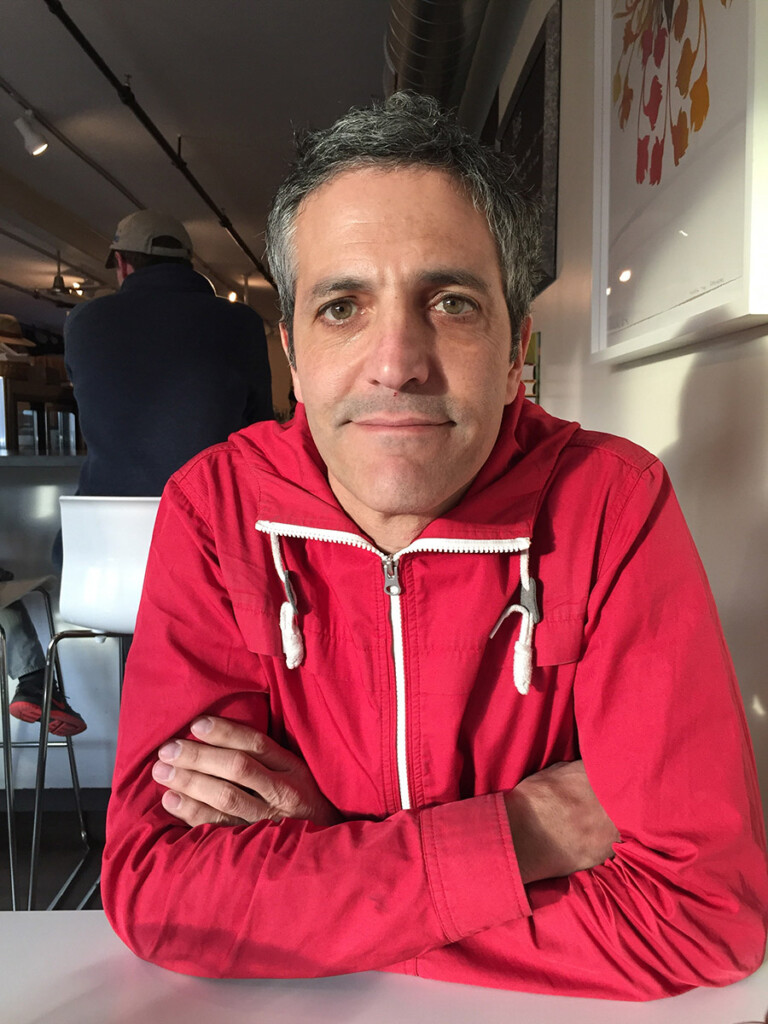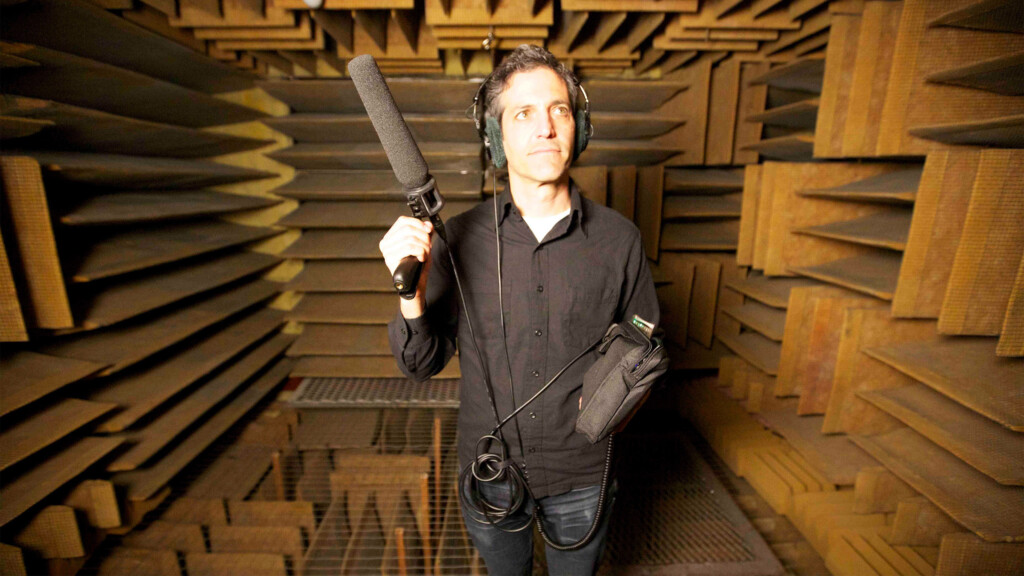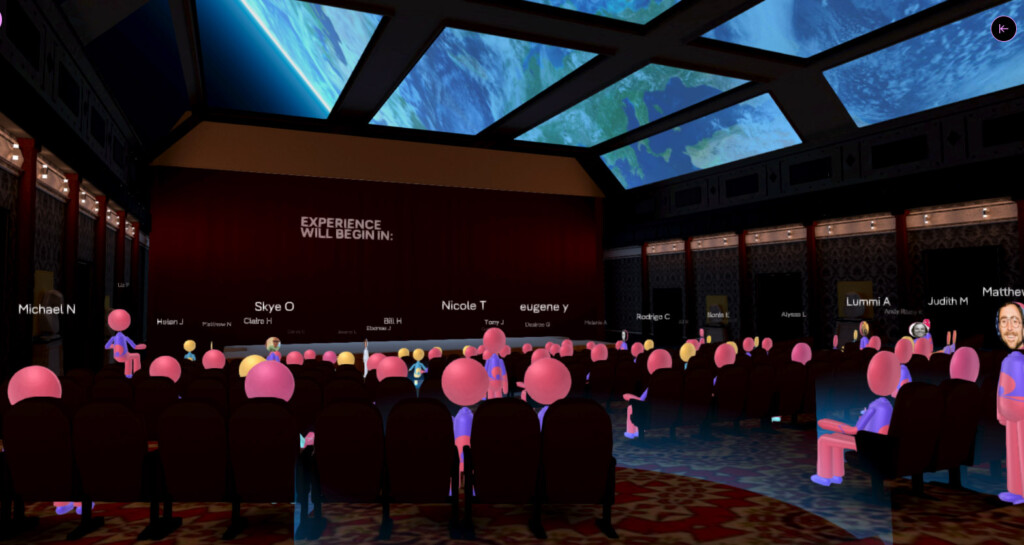Sam Green’s documentary 32 Sounds, which premiered in the Sundance Film Festival’s New Frontiers program, is a superb example of a cross-disciplinary STEAM presentation (that is, putting Art into STEM). Intelligent as it is hugely entertaining, Green has crafted an ideal film that will nourish anyone’s aspirations for a career or personal experiences, which integrate science, physics, music and sound design so exquisitely.
As it encourages audience interaction and on-the-spot reactions, the documentary was planned to be part of a live performance before the festival switched gears and went online. But, there is hope that live performances would occur at some point later this year. The answer should be an unequivocal yes.
For the first few minutes as they set the stage for the film, Green and composer J.D. Samson, his collaborator, insistently urge viewers to use headphones for the experience. While it might not have been necessary, using headphones unquestionably enriched the experience.

What is remarkable is how Green synthesized the thread of 32 sounds — really miniature chapters — into a documentary narrative that is as seamless as any finely edited storytelling in other documentaries. Thus, 32 Sounds is a cinematic composition in a unique structure.
Green starts appropriately enough with the fact that a developing infant in a mother’s womb at four months into a pregnancy is capable of hearing every sound. There is a brief introduction to the massive sound archive of the British Library, a collection of seven million recordings including rare examples dating to the earliest available period. Among them is the mating call of a Hawaiian bird species that went extinct in the 1980s. There were just two left – a male and a female — but the female was killed during a hurricane. The sounds of a male bird unsuccessfully trying to attract a mate during breeding season astound the senses.
Green’s segues throughout the film are ingenious, quickly moving from the sound of a Zamboni resurfacing an ice rink to a cat’s purr (a sound that still eludes a comprehensive understanding of this particular feline feature) and then to the universally familiar juvenile sound that comes from a whoopee cushion. The bonus is that Green offers the scientific explanation for how this novelty gag item can produce this crudely hilarious sound.

There also is Green’s fascinating contemplation of Charles Babbage, the 19th century mathematician who conceived the foundational thinking about programmable computers. Babbage’s quote from 1837 grounds the film’s subsequent transitions: “The air itself is one vast library on whose pages are forever written all that man has ever said or woman whispered.” This concept appears throughout the film. Poet Fred Moten talks about hearing ghosts all of the time, including his grandparents, parents and other relatives. There is the mention of shinshin, the unique Japanese term to describe the sound of snow falling. Green also brings in Christine Sun Kim, a sound artist who has been profoundly deaf since her birth, and whose portfolio credits include appearances at the Super Bowl, the Museum of Modern Art and the Whitney Museum of American Art. Kim’s work upends the conventions about sound and its considerations as social currency. Her TED talk in 2015 recounted her discovering the similarities between American Sign Language and music and how sound through means other than auditory are as central to a deaf person’s life as to anyone else. Green has so many elucidating juxtapositions in play, featuring, for example, experimental sound artist and musician Mazen Kerbaj, from Lebanon, and physicist Edgar Choueiri, who is on the faculty at Princeton and is a participating scientist in the Jet Propulsion Laboratory.
In some of the most absorbing scenes, Green introduces audiences to avant-garde musicians and composers (including glimpses of Philip Glass, the foremost composer of minimalism). There are clips of John Cage’s famous piece 4’ 33”, which really was a seminal philosophical statement that has inspired contemporary composers to this day to think about immersive and ambient sounds in their work, which have taken many directions. The clips include Cage’s own street performance in the middle of Manhattan in 1971.
Meanwhile, making a major presence is Annea Lockwood, a New Zealand native and composer who remains active today at the age of 81. Green features a clip from her Piano Burning composition in a 1968 performance and then switches to a scene filmed in 2020 of the composer recording underwater sounds in a marshland. It is Lockwood’s distinction that in our engagement of sound, it is an experience of “listening with,” and not “listening to.” This tantalizing assertion emphasizes sound’s pervasive stealth capacity. Indeed, the sound of a train horn in the distance — a commonplace occurrence that suddenly seems incredible in thinking about Lockwood’s distinction — helps illustrate this point perfectly. She talks about how the evening sharpens our senses, as another world emerges in the darkness.

Lockwood’s presence in the film anchors Green’s thematic impulses with edifying clarity. In the 1970s, Lockwood and composer Ruth Anderson, a pioneer in electronic music, recorded Conversations, a composition based on the long distance calls the two enjoyed. They would eventually spend the next 46 years together in their Flathead Lake home in Montana, until Anderson died at the age of 91 in 2019. Anderson once wrote about her music, “It has evolved from an understanding of sound as energy which affects one’s state of being. [These are] pieces intended to further wholeness of self and unity with others.” Truly, the two composers had always operated on the same wavelengths.
The treasure chest of sounds in Green’s film overflows the edges. There is a glimpse of the trade secrets that make foley artists such an essential part of cinematic sound design. There is a mesmerizing scene about how binaural sound recordings immerse the listener in ways that a theater’s surround sound technology could never achieve. There are nostalgic bits, such as the songs that brought back experiences of the 1970s for Nahanda Abiodun, a Black Liberation Army activist who spent the remainder of her life living in exile in Cuba. There is a five-minute intermission with DJ remixes, celebrating the thumping low bass beats of club favorites, including the Giorgio Moroder creation of I Feel Love, immortalized by Donna Summer. The music includes a quick-paced montage of video clips from the same period. Green pulls many classic treasures from the archive including the Memorex commercial in the 1970s, featuring jazz great Ella Fitzgerald shattering a glass with her vocals: Hence, one of the most remembered advertising lines of the decade: “Is it live of Memorex?”
A veteran of Sundance who has produced many memorable projects. Green has designed this latest documentary to be ecumenical, accessible and meaningful for anyone and its multidisciplinary value especially should be highly esteemed.
The film is an Impact Partners project, with Geralyn Dreyfous, cofounder and board chair of the Utah Film Center, as one of the executive producers.
